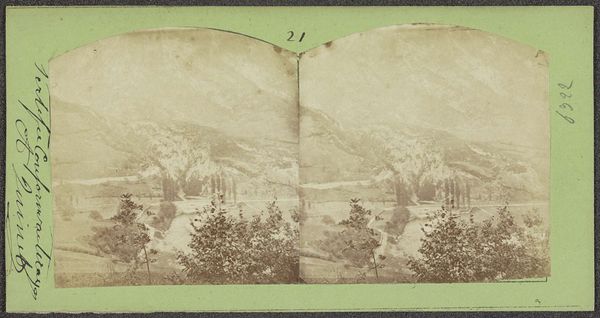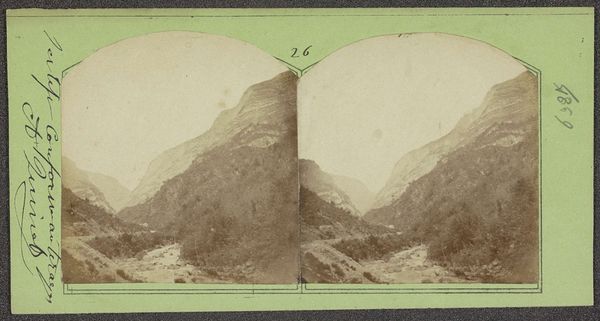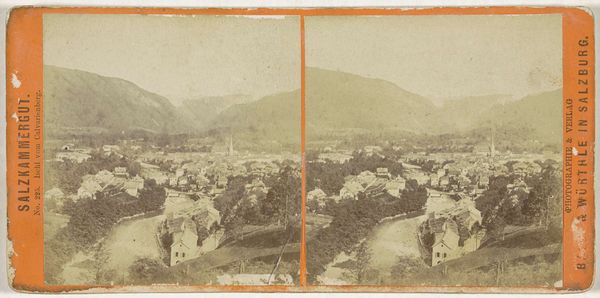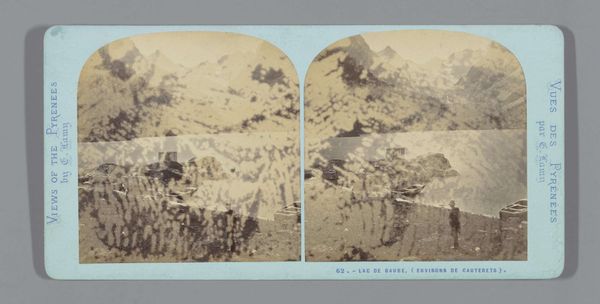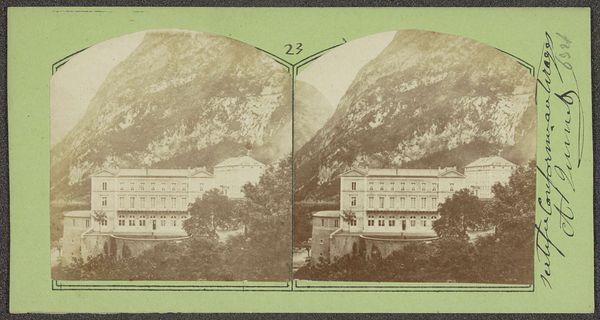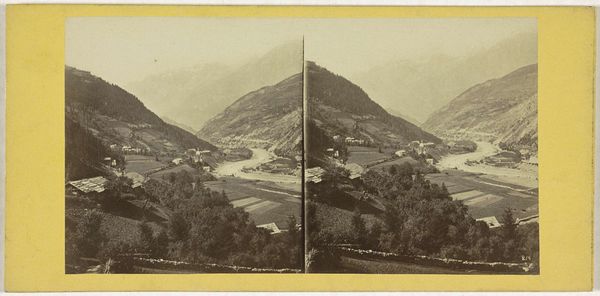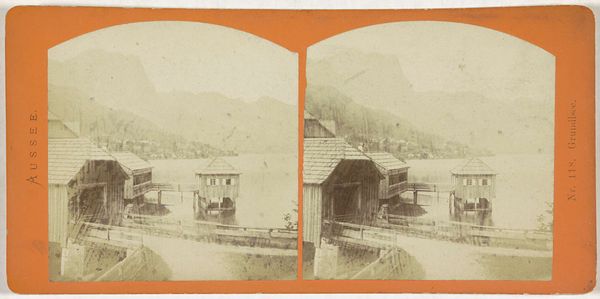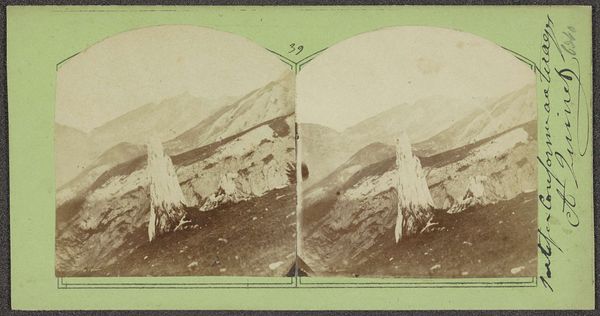
photography, albumen-print
#
landscape
#
photography
#
mountain
#
cityscape
#
albumen-print
Dimensions: height 90 mm, width 170 mm, height 75 mm, width 74 mm, height 76 mm, width 74 mm
Copyright: Rijks Museum: Open Domain
Editor: So, this is Achille Quinet's "Dorpje aan de voet van een berg; de Alpen," made sometime between 1860 and 1880. It's an albumen print. It’s a little faded, but you can still see the detail. I'm struck by the tonal range in the photograph – from almost white at the peaks, to the deep grays in the village. What do you see in this piece? Curator: I notice first the calculated arrangement of forms. Consider how the artist used a wide depth of field to clearly juxtapose the built environment and the natural, mountainous landscape. This interplay establishes a visual tension between human habitation and the geological, almost primordial mass of the mountain, doesn’t it? Editor: That's interesting. I hadn’t thought of it that way. So it's the contrast, rather than harmony that interests you? Curator: Precisely. Note how the geometric precision of the architecture and terraced landscaping contrasts sharply with the rugged, untamed texture of the rock formations. The photograph is a successful arrangement of tonal value and shape. Even in this format as a stereograph, the attention to formal components remains. What else catches your eye? Editor: The way the light falls. It seems to unify the scene despite those contrasts. Curator: Indeed! Quinet masterfully employs the play of light to synthesize otherwise distinct textures and shapes in the landscape. Editor: Thanks. I'm now more attentive to the strategic choices involved in landscape photography during this period. Curator: Likewise, this perspective allows me to consider formal composition, as the defining artistic intervention.
Comments
No comments
Be the first to comment and join the conversation on the ultimate creative platform.
